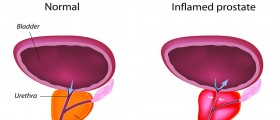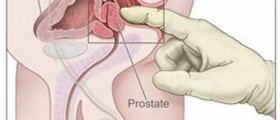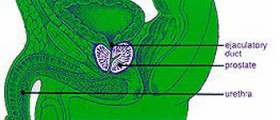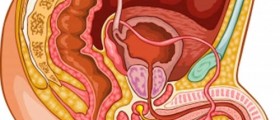
Prostatitis may be caused by a bacterial infection, in which case the condition is normally easily resolved. Sometimes, however, the cause of prostatitis is not as obvious as this, and in some cases, identification of the cause may be impossible. Prostatitis can resolve quickly - sometimes without treatment - but chronic (persistent) prostatitis can also occur. If you wish to help relieve the symptoms of prostatitis, try soaking in a warm bath and limiting your alcohol and caffeine intake. You should also look to relieve pressure on the prostate by sitting on a cushion and avoiding cycling.
Some symptoms that indicate prostatitis include: pain during urination, frequent urination, an urgent need to urinate or pain in the abdomen, lower back, groin, penis or testicles. Pain might also be experienced in the perineum, and in some cases, one might experience flu-like symptoms - this is a good indication of bacterial prostatitis.
You should look to consult a doctor or medical professional if certain symptoms become apparent. Further to the symptoms listed earlier, you should seek treatment if you suffer from painful ejaculation, pelvic pain or difficulties while urinating. If you don’t treat prostatitis promptly and efficiently, it might result in a worsening of the condition and could lead to further health problems.
Types of ProstatitisAcute bacterial prostatitis might cause symptoms similar to those experienced during influenza. Normally, antibiotics will help the successful treatment of prostatitis. If the bacterial prostatitis persists for more than three months, this is considered to be chronic bacterial prostatitis. With the chronic type, urinary tract infections are regularly seen.
The majority of prostatitis cases fall under the category known as chronic abacterial prostatitis. Also known as chronic pelvic pain syndrome, it will last for more than three months. In some, symptoms may come and go, but in others the symptoms may be consistent over the course of the condition.
Another form of prostatitis may develop. Known as asymptomatic inflammatory prostatitis, this condition occurs without the manifestation of any symptoms. This type of prostatitis does not require treatment and is usually only discovered in the event of treatment being undergone for other conditions.
- www.nhs.uk/conditions/prostatitis/
- medlineplus.gov/ency/article/000524.htm
- Photo courtesy of Amadalvarez by Wikimedia Commons: commons.wikimedia.org/wiki/File:Prostatitis_cr%C3%B2nica.1224.jpg

















Your thoughts on this
Loading...